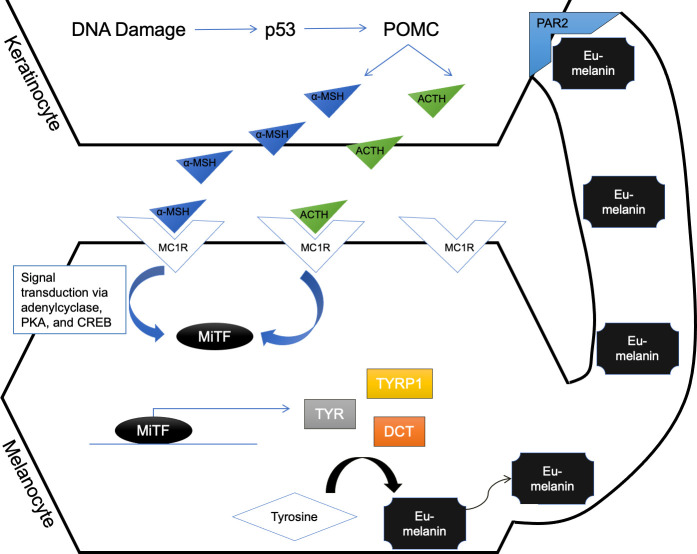Fig 1. Melanin biosynthetic pathway.
In the canonical pathway, keratinocytes that acquire DNA damage, usually through ultraviolet light (UVB), respond by upregulating tumor protein 53 (p53). p53 in turn is a transcription factor for proopiomelanocortin (POMC), thus upregulating its expression. POMC is proteolytically cleaved to its products, alpha melanocyte stimulating hormone (α-MSH) and adrenocorticotropin hormone (ACTH), which are secreted by keratinocytes and bind the melanocortin 1 (MC1R) on melanocyte membranes. This ligand-receptor binding propagates the signal transduction in melanocytes via adenylcyclase, protein kinase A (PKA), and cyclic AMP response element binding protein (CREB) to ultimately upregulate MiTF expression. When MiTF is phosphorylated through other mechanisms, it is translocated to the nucleus where it acts as a transcription factor for tyrosinase (TYR), tyrosinase related protein 1 (TYRP1), and dopachrome tautomerase (DCT), which are all enzymes required to convert tyrosine to eumelanin. Eumelanin is then packaged and transferred back to keratinocytes via protease-activated receptor 2 (PAR2) to protect against further keratinocyte nuclear damage.

